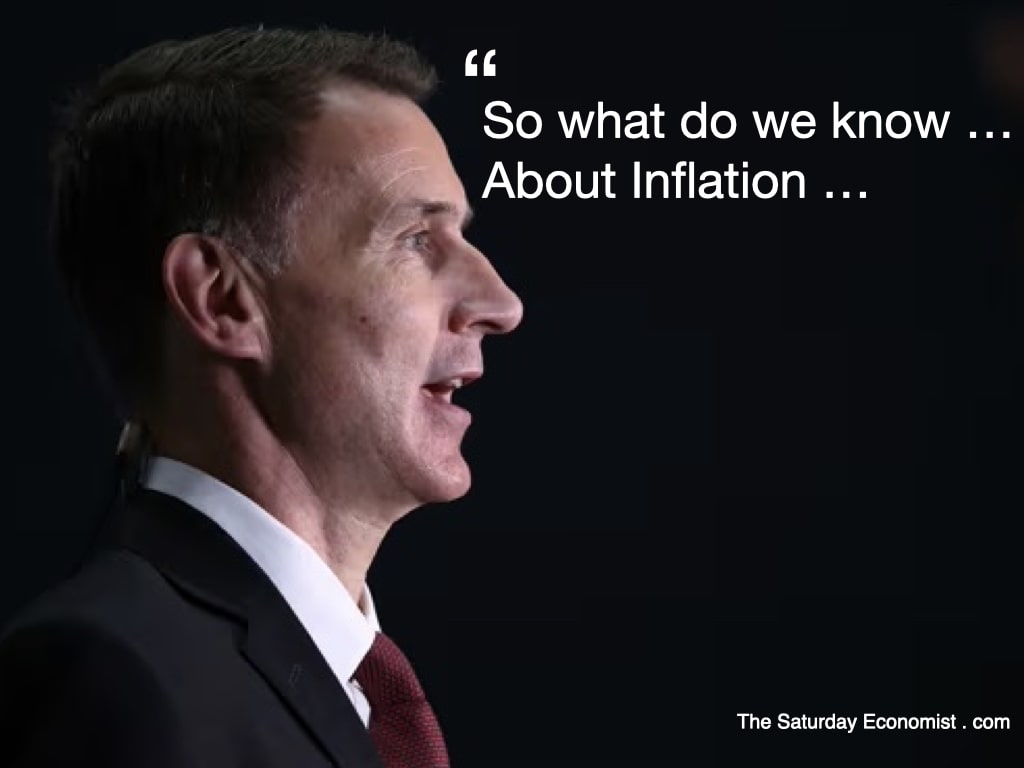|
Inflation, CPI basis edged higher to 5.5% in January, up from 5.4% in December. It was a modest move, made easier by the slow down in service sector inflation, to 3.2% from 3.4% prior month.
Goods inflation, on the other hand, increased to 7.2%. Food prices were up by 4.5%. Clothing and footwear costs up 6.5%. Furniture and household appliances up 10%. Electricity and gas bills were up by over 20%. Thinking of buying a second hand car? You will be paying almost 30% more than January last year. Filling up the tank will cost 25% more on average. Oil prices to blame. Oil closed down slightly at $92.66 at the end of the week. $92 dollars compares with an average $62 dollars last year, a 50% inflationary impact. Producer output prices increased to 9.9% in the month. Input costs for manufacturers increased by 13.6%. This was down on the 15% hike in November. A hint perhaps cost pressures are set to ease? Oil prices, metals and chemicals feature heavily in the cost burden. Food costs, both home grown and imported, are up by around 6%. Thanks heavens for the moment, we don't have to worry about the exchange rate. Sterling closed at $1.36 against the dollar.$1.35 is our forecast outlook. The Bank of England expects inflation to peak at just over 7% in April. Trending lower thereafter, towards 3% by the end of the year. In the U.S. inflation hit 7.5% in January. Prices are expected to ease to 3.5% by December. In Europe, inflation increased to 5.1% in January. The ECB expects inflation to return to the 2% target by the end of the year. The price surge, is part of the Tsunami after wave, of the seismic pandemic shock. Oil prices reflect constraints to output in Russia, North America and OPEC. Exacerbated by geopolitical tensions on NATO's borders, we still expect prices to soften into the year. The inflation impact then eases into the second half. In our Friday Forward Guidance we discuss the implications for interest rates in the U.S., U.K. and Europe. Interest rates are projected to end the year at 1.25% in the U.S. and the U.K. They may well be higher at 1.50%. We expect some follow me action by the ECB. One of the key issues for the MPC, is just what happens next to wages ... Labour Market Update ... Another incredible set of figures for the UK Labour Market. Unemployment fell to 1.374 million in December. Vacancies increased to 1.298 million in January. The unemployment rate was 4.1%. The UV rate, unemployed to vacancies rate, was just 1.06. The number in employment was 32.5 million. That's down from 33.0 million in the first quarter of 2020. 8.8 million were classified as inactive, compared to 8.5 million in Q1 2020. More in employment, up by 400,000. Fewer self employed, down by 800,000. More working full time, up by 700,000, fewer working part time, down by 300,000. 300,000 more now inactive. It all makes for a challenging recruitment market. Earnings increased by 4.3% in December, down from the peak of 8.8% in June. The trend is tracking our forecast model. We expect earnings to average around 3.5% by the end of the year. The real earnings squeeze in the first half of the year should ease by the final quarter. The Governor of the Bank of England has issued a warning about high wage demands. Higher base rates will be the result of excessive earnings increases. Recruiters are struggling to meet jobs quotas. Turnover rates are increasing. It doesn't make for a modest pay round this year. Central bankers are taking away the punch bowl. Time to pay for your own drinks ...
0 Comments
Leave a Reply. |
The Saturday EconomistAuthorJohn Ashcroft publishes the Saturday Economist. Join the mailing list for updates on the UK and World Economy. Archives
July 2024
Categories
All
|
| The Saturday Economist |
The material is based upon information which we consider to be reliable but we do not represent that it is accurate or complete and it should not be relied upon as such. We accept no liability for errors, or omissions of opinion or fact. In particular, no reliance should be placed on the comments on trends in financial markets. The presentation should not be construed as the giving of investment advice.
|
The Saturday Economist, weekly updates on the UK economy.
Sign Up Now! Stay Up To Date! | Privacy Policy | Terms and Conditions | |

 RSS Feed
RSS Feed